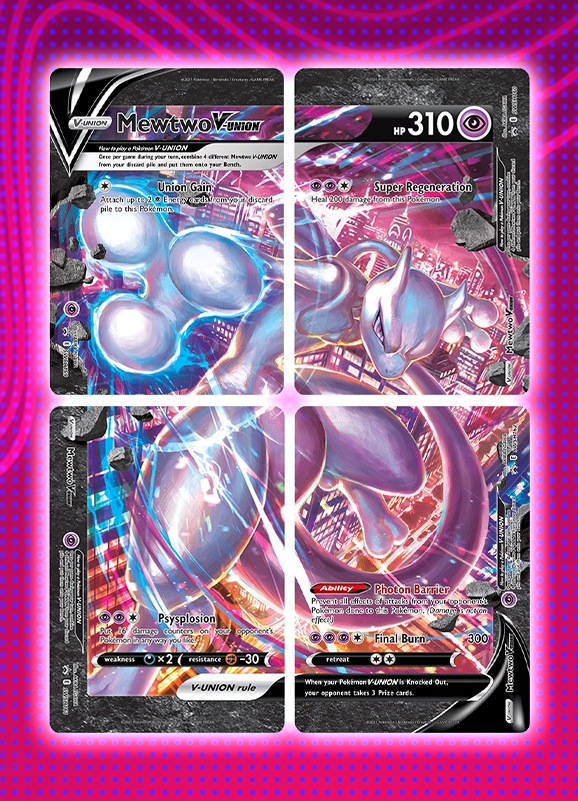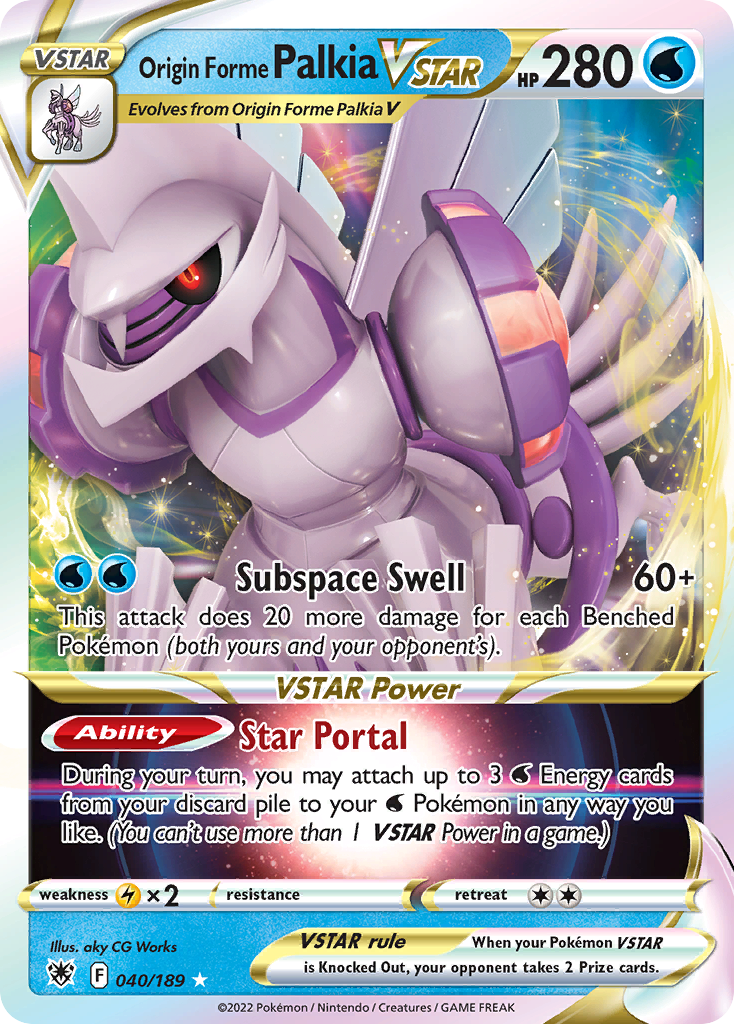Is Mewtwo V-UNION Viable for Worlds?
Hello everyone! Here's Gabriel again with another Pokémon TCG article and this time I'm going to talk about a deck that many knows exist, but few truly know how it works to win games and reach the Top 4 of one of the main Pokémon TCG competitions of the world.
About Mewtwo V-UNION
 My interest in writing about Mewtwo V-UNION arose when I realized that good Pokémon TCG players didn't know how the deck actually worked. As much as the deck has been successful in the North American International Championship thanks to players like Mees Brenninkmeijer and especially Sander Wojcik, it is not a deck that has become popular and few players are interested in testing the deck or at least knowing what to do when you face a deck like this. But if an entirely new deck made the Top Four at the NAIC, why do I get the feeling the deck isn't being taken seriously?
My interest in writing about Mewtwo V-UNION arose when I realized that good Pokémon TCG players didn't know how the deck actually worked. As much as the deck has been successful in the North American International Championship thanks to players like Mees Brenninkmeijer and especially Sander Wojcik, it is not a deck that has become popular and few players are interested in testing the deck or at least knowing what to do when you face a deck like this. But if an entirely new deck made the Top Four at the NAIC, why do I get the feeling the deck isn't being taken seriously?
Despite never knowing for sure the answer to this question, it is possible to have an idea of some reasons that can lead players to prefer the existence of this deck instead of testing and understanding how this wonderful idea works. The reason I hear most from the players that I coach and my friends is that Mewtwo V-UNION is a deck that gains a lot of strength in the surprise factor and now that the deck is already known, all that can change, because instead of Mewtwo V-UNION being the deck that wins the metagame, it is now part of the metagame and can be countered by prepared opponents. For players who already have some deck preferences and don't intend to use Mewtwo V-UNION, the reason I hear most is that it's not worth studying, training, much less investing in tech cards against Mewtwo V-UNION because the deck is not popular.
It is true that Mewtwo V-UNION is a totally different one from what we are used to, after all, it is the first time that a Pokémon V-UNION appears in the Top Eight of a competition, even more being the NAIC, however, the surprise factor despite being a good edge in your favor, strength, deckbuilding and the quality of the player who is piloting the deck are still the strengths that matter. Regarding the low popularity of Mewtwo V-UNION, I also hear from players that playing control is boring. The word boring is divisive because a competitive player will not always play with fun decks if they want to win. The word boring can mean that the deck is difficult to pilot because it is a complex and different list. Another reason for the deck to be considered “boring” could be because the deck attacks little and takes time to win. In many games you will beat your opponent fast, but for you to theoretically get the win by collecting the six Prizes you could end up using all the available 50 minutes of the round, even if your opponent doesn't pose the slightest danger to you. The NAIC Sander Vs. Blue Top Four match illustrates this well; Azul lost the second game in a few minutes, and for Sander to finish the game took much longer because the process of returning resources from the discard to the hand is painfully slow. It's incomparable to the time when it had Oranguru with Resource Management and Lusamine in the format.
How do you win games with Mewtwo V-UNION?
The first question I asked the players I coach when I said I would play Mewtwo V-UNION against them was, “do you know how you intend to win this match, and do you know how I intend to win this match?” The answers ranged from “no” to “more or less...”.
Although the deck was presented a couple of weeks ago, the truth is that if there is no real intention of wanting to learn about Mewtwo V-UNION, there will be few opportunities you will have to face a deck like this in the Pokémon Trading Card Game Online or in Local Tournaments. The Mewtwo V-UNION deck was a deck built by highly competitive players, especially for use in a highly competitive tournament like NAIC.
Back to the subject, it's important to understand that although Mewtwo V-UNION is an interesting Pokémon card, the deck as a whole is an anti-meta call and it was built around the main decks of the format, which are: Origin Forme Palkia VSTAR/ Inteleon, Arceus VSTAR / Inteleon, Mew VMAX and Arceus VSTAR / Flying Pikachu VMAX. To win each of these decks, you'll need to play differently in all these matchups, even if your strategy has a common goal: to prevent your opponent from attacking you. Only after making your opponent unable to attack will you start attacking your opponent to get the six Prizes. As long as your opponent has the resources to attack you, your objective is to delay the opponent as long as possible so that you can find the four parts of the Mewtwo V-UNION and thus put it in the discard. After Mewtwo V-UNION comes to the field, the idea is to use the Union Gain attack to get Energy, and then attack for as long as necessary with the Super Regeneration attack. If the opponent doesn't have a way to deal more than 200 damage, then they basically have no way to KO Mewtwo V-UNION, and Palkia VSTAR and Arceus VSTAR don't deal more than 200 damage normally.
Against Mew VMAX the gameplay changes a bit, as a big matchup piece is Yveltal. Unlike Palkia VSTAR and Arceus VSTAR, Mew VMAX can hit over 300 damage if needed, so it's capable of Knocking Out Mewtwo V-UNION. The path to victory is still the same; discard the opponent's Energy, form Mewtwo V-UNION, and get the six Prizes. The big difference is that Mew VMAX's strength comes from Special Energy and if Yveltal, Flannery and Crushing Hammer do their respective jobs, it's possible to slow them down enough to better control the opponent.
This concludes the public portion of this article.
If you'd like to continue reading, consider purchasing a PokeBeach premium membership! If you're not completely satisfied with your membership, you can request a full refund within 30 days.
Each week we post high-quality content from some of the game's top players. Our article program isn't a corporate operation, advertising front, or for-profit business. We set our prices so that we can pay the game's top players to write the best content for our subscribers. Each article topic is carefully selected, goes through multiple drafts, and is touched up by our editors. We take great pride in our program!


